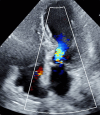Takotsubo Syndrome in the Emergency Room - Diagnostic Challenges and Suggested Algorithm
- PMID: 39076227
- PMCID: PMC11273971
- DOI: 10.31083/j.rcm2304131
Takotsubo Syndrome in the Emergency Room - Diagnostic Challenges and Suggested Algorithm
Abstract
Takotsubo syndrome is an important condition to consider among patients with acute chest pain in the emergency room. It often mimics acute coronary syndrome since chest pain and ECG changes are key features in both conditions. The hallmark of takotsubo syndrome is transient left ventricular dysfunction (characterized by apical ballooning) followed by complete echocardiographic recovery in most cases. Although most patients exhibit a benign course, lethal complications may occur. The use of hand-held point-of-care focused cardiac ultrasound may be helpful for early identification of takotsubo syndrome and distinguishing it from acute coronary syndrome and other cardiovascular emergencies. Emergency room physicians should be familiar with typical and atypical presentations of takotsubo syndrome and its key electrocardiographic changes. The approach in the emergency room should be based on a combination the clinical presentation, ECG, and handheld echocardiography device findings, rather than a single electrocardiographic algorithm.
Keywords: acute coronary syndrome; echocardiography; point-of-care focused cardiac ultrasound; takotsubo syndrome.
Copyright: © 2022 The Author(s). Published by IMR Press.
Conflict of interest statement
The authors declare no conflict of interest.
Figures




References
-
- Sharkey SW, Windenburg DC, Lesser JR, Maron MS, Hauser RG, Lesser JN, et al. Natural history and expansive clinical profile of stress (tako-tsubo) cardiomyopathy. Journal of the American College of Cardiology . 2010;55:333–341. - PubMed
-
- Prasad A, Lerman A, Rihal CS. Apical ballooning syndrome (Tako-Tsubo or stress cardiomyopathy): a mimic of acute myocardial infarction. American Heart Journal . 2008;155:408–417. - PubMed
-
- Summers MR, Prasad A. Takotsubo Cardiomyopathy: definition and clinical profile. Heart Failure Clinics . 2013;9:111–122. - PubMed
-
- Ghadri JR, Cammann VL, Napp LC, Jurisic S, Diekmann J, Bataiosu DR, et al. Differences in the Clinical Profile and Outcomes of Typical and Atypical Takotsubo Syndrome: Data From the International Takotsubo Registry. JAMA Cardiology . 2016;1:335. - PubMed
-
- Bybee KA, Kara T, Prasad A, Lerman A, Barsness GW, Wright RS, et al. Systematic Review: Transient Left Ventricular Apical Ballooning: a Syndrome that Mimics ST-Segment Elevation Myocardial Infarction. Annals of Internal Medicine . 2004;141:858. - PubMed
Publication types
LinkOut - more resources
Full Text Sources

